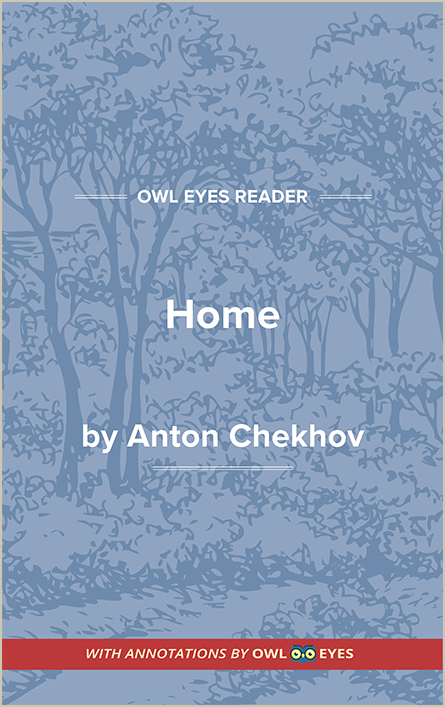Analysis Pages
Literary Devices in Home
Free Indirect Discourse: Chekhov was an author of the realist school and wrote stories that spoke to the reality of human experience. One of the techniques that helped convey his sense of realism was free indirect discourse, which allows readers to imperceptibly slip in and out of the minds of the characters. Throughout the story, readers are able to look into the inner workings of Yevgeny’s mind through parenthetical interjections and a stream-of-consciousness literary style.
Biblical Allusions: In order to highlight Seryozha’s innocence, Chekhov makes use of biblical allusions. He compares the boy to a “cherub,” a winged, child-like angel. This comparison helps compound the young boy’s innocence and purity.
Symbolic Use of Numbers: Seryozha’s naivete stands in stark contrast with Yevgeny’s rigid, prosecutorial manner of thought. One way that highlights Yevgeny’s thought process is the use of numbers. Everything in Yevgeny’s space is ordered in terms of numbers, including the eight-note scales heard in the background and Seryozha’s drawing of a bayonet which resembles the number four.
Literary Devices Examples in Home:
Text of the Story
🔒"Overhead the scales could no longer be heard, but the inhabitant of the second storey was still pacing from one end of the room to another...." See in text (Text of the Story)
"Adam..." See in text (Text of the Story)
"Yevgeny Petrovitch sat down to the table and pulled one of Seryozha's drawings to him. In it there was a house with a crooked roof, and smoke which came out of the chimney like a flash of lightning in zigzags up to the very edge of the paper; beside the house stood a soldier with dots for eyes and a bayonet that looked like the figure 4...." See in text (Text of the Story)
"Death carries mothers and uncles off to the other world, while their children and violins remain upon the earth...." See in text (Text of the Story)
"("A clever teacher, I am!" he thought.)..." See in text (Text of the Story)
"("I am not saying the right thing!" thought Yevgeny Petrovitch.)..." See in text (Text of the Story)
"He was a child whose sex could only have been guessed from his dress: weakly, white-faced, and fragile. ..." See in text (Text of the Story)

